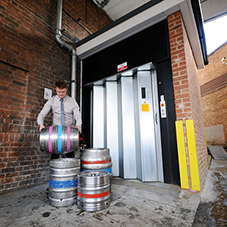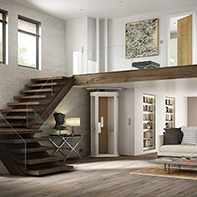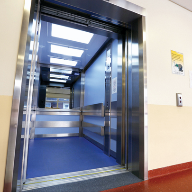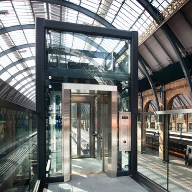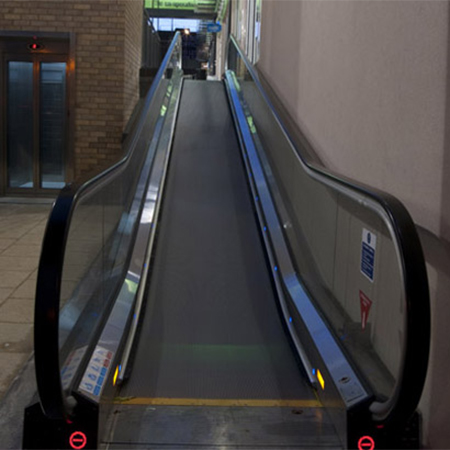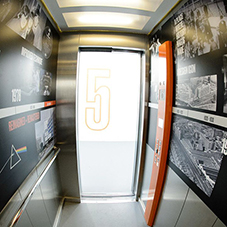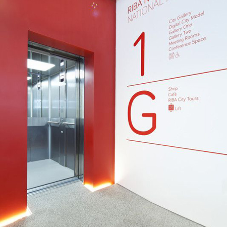Here’s a handy overview of the key acts, regulations, and standards that outline best practices around lift requirements in buildings - ensuring that any commercial/public building is accessible and efficient for building users.
Introduction
There are three main items that outline the best practice for making a commercial/public building accessible, namely:
1. The legal framework, the Equality Act
2. The building regulations, Part M Vol.1 & Vol.2 (England & Wales) or Section 4 of the Technical Handbook (Scotland)
3. The design guidance, British Standard BS 8300: 2018 - Part 1 & 2.
These all help to outline the legal requirements, what lift to consider in a new building and the preference and guidance on ensuring an accessible lift. The latter two highlight specific lift requirements and preferences between the different types of passenger moving lifts.
1. Equality Act 2010... The Legal Bit
Sometimes, a physical feature of a building (or other premises) can make it more difficult for a person with impaired mobility to access. The Equality Act 2010 (formerly DDA) states that if you place someone at a substantial disadvantage, you have a legal duty to make reasonable adjustments. This is where a lift can play a part.
It's possible to install one or more disabled access lifts in most buildings that have two or more floors, or to provide a ramp or step lift where there is a short flight of stairs. Any lift adds value to the commercial property it's placed in by speeding up the movement of people up and down the building and meet the requirements of the Act.
For both new and existing buildings, the appropriate lift provision is through Building Regulations to give instruction and guidance from BS 8300:2018 Design of an accessible and inclusive built environment.
Find out more about the Equality Act here
2a. Part M... The Regulations in England & Wales
The Building Regulations, Approved Document M (Part M) gives direction on enabling a public access building to conform to the Equality Act. This public access regulations document states that reasonable provisions must be made for people to gain access to and use the building's facilities.
In summary, Part M states that the preferred solution to disabled access is a passenger lift, with the number of lifts, and type and size depending upon the application.
However, it also recognises that it may not always be possible for a building to accommodate one so proposes the next best alternatives, namely platform lifts and wheelchair platform stairlifts.
It’s also worth checking Fire Safety: Approved Document B which covers all fire safety matters within and around buildings. It includes further detail on firefighter lifts and evacuation lifts which are increasingly becoming an important requirement in building design since Grenfell and the Building Safety Act.
2b. Section 4.2... The Regulations in Scotland
Like its counterpart, Section 4.2 gives direction on enabling public access to conform to the Equality Act. Most of the requirements of Section 4.2 are identical or closely similar to Part M. However, the platform size requirements do differ, with the Scotland document requiring larger minimum platform sizes for both low and medium-rise platform lifts.
3. BS 8300:2018... The Design Guidance
British Standard BS 8300: 2018 (Part 1 and 2) looks at the design of new buildings and their ability to create an inclusive environment.
This code of practice aims to give the information needed to create an inclusive environment from the outset of a project. Part 1 primarily covers access in and around the external environment and the approaches to buildings. Part 2 provides guidance on access within buildings, including the facilities that should be provided inside buildings.
In offering best-practice recommendations, this standard explains how architectural design and the built environment can help disabled people to make the most of their surroundings. This standard strongly recommends that in multi-storey buildings, at least one lift (of sufficient size) must be made accessible to wheelchair users.
An accessible lift will need to meet the following criteria:
• Can be found easily
• Is large enough for its intended use
• Leaves space outside to manoeuvre
• Is fitted with lift controls that are easily found and identifiable
• Is fitted with visual and audible signals
• Has a clear entrance of suitable width
• Is fitted with a reasonable level of lighting in the car and on all landings
• Is accurate on stopping to ensure ease of entry/exit
Lift Provision & Building Regulations
It's also worth pointing out that depending on the type of lift and the specification will then define the further standards that lift falls under - for a full list of lift standards take a look at Stannah’s glossary. Or, if you think you require a lift then why not take a look at Stannah’s 3 key considerations when choosing a people-moving lift.
For any building, existing or new it is important to consider the guidance above and the people at Stannah hope that this blog gives a quick summary of the lift requirement.
At Stannah, they offer a broad range of platform lift products (and passenger lifts) to enable easy vertical circulation, working with you to solve your access problem and comply with building regulations. A reputable lift provider will be able to assist you in your decision-making, however, it's certainly worth being well-informed about these design considerations yourself.
Building Regulations Lift Requirements UK
| T | 01264 339 090 |
|---|---|
| F | 01264 339 090 |
| E | contact@stannah.co.uk |
| W | Visit Stannah Lifts's website |
| Watt Close, East Portway, Andover, Hampshire, SP10 3SD |


